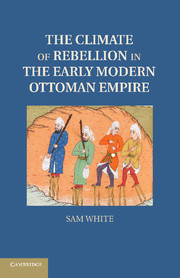Book contents
- Frontmatter
- Contents
- Acknowledgments
- Preface
- Glossary of Ottoman Terms
- Maps
- Introduction
- Part I An Imperial Ecology
- 1 Regions, Resources, and Settlement
- 2 Growth and Its Limits
- 3 Disasters of the Late Sixteenth Century
- 4 Land at The Margins
- Part II The Little Ice Age Crisis
- Part III Ecological Transformation
- Conclusion
- Bibliography
- Index
- References
1 - Regions, Resources, and Settlement
Published online by Cambridge University Press: 05 February 2012
- Frontmatter
- Contents
- Acknowledgments
- Preface
- Glossary of Ottoman Terms
- Maps
- Introduction
- Part I An Imperial Ecology
- 1 Regions, Resources, and Settlement
- 2 Growth and Its Limits
- 3 Disasters of the Late Sixteenth Century
- 4 Land at The Margins
- Part II The Little Ice Age Crisis
- Part III Ecological Transformation
- Conclusion
- Bibliography
- Index
- References
Summary
The century leading up to Lepanto and above all the long reign of Süleyman the Magnificent (1520–66) marks the so-called Ottoman classical age when the empire's distinctive political and military system took root and flourished. The sultan, lodged in his imperial palace at Topkapı on the seaward tip of old Constantinople, oversaw the decisions of his viziers and officers in the imperial divan, met with petitioners and ambassadors from the furthest corners of his empire and beyond, and personally led his soldiers year after year to distant fronts in Hungary and Persia, where the empire continued to expand decade after decade. His soldiers comprised, on the one hand, the sipahis, or prebendal cavalry, awarded grants of land for military service at the discretion of the sultan, and on the other hand, the Janissaries, the slave soldiers recruited from Balkan children, raised as Muslims and trained in the arts of war. The same slave recruitment provided for an elaborate palace staff and bureaucracy in the imperial capital, while the kadıs, the judge-administrators schooled in Islamic law, oversaw the day-to-day running of the provinces.
- Type
- Chapter
- Information
- Publisher: Cambridge University PressPrint publication year: 2011

